“Some mistakes, I guess, we never stop paying for.” – Roy Hobbs, The Natural
OK, so this quote draws from a movie about baseball, not hockey. And to employ it here is engaging in more than a bit of melodrama, given that Robert Redford’s character was referring to matters of life larger than NHL trades.
For the New York Rangers, though, such a sentiment nevertheless applies when it comes to the matter of their terrible Feb. 26, 2018 blockbuster deal with the Tampa Bay Lightning, one of two such trades that kicked off their full-scale, formally-stated rebuilding project.
Thankfully for the Blueshirts, this trade didn’t set the tone for their teardown, which has been largely successful and borne fruit in the form of a 31-13-4 record as they look to return to the playoffs for the first time since 2017. Yet that trade has proven to be so lopsided, the club is still acutely feeling the effects – and, even worse, could put itself in position to continue doing so well into the future.
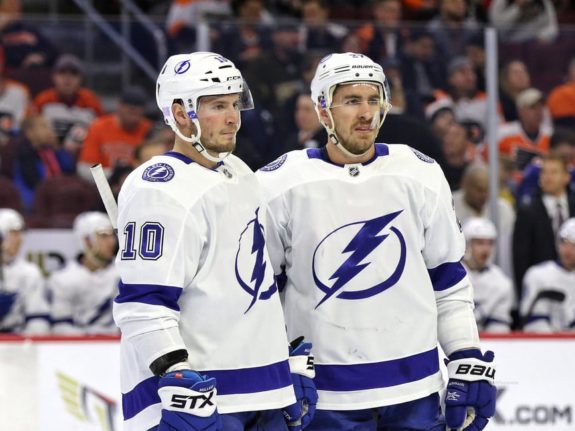
So let’s take an in-depth look at how this deal is presently affecting the club, and how this season’s trade deadline could create a situation where it impacts the team for years to come.
Note: For the purposes of this exercise, we’re going to skip individually evaluating the trading of Ryan McDonagh. The Rangers likely had little doubt that their captain would find success elsewhere, but the prevailing feeling at the time was that McDonagh’s time in New York was finished, with the team unlikely to sign him to a lucrative extension that summer after the defenseman’s growing list of injuries and a roster decline left player and club in different places. A fresh start for both parties was probably needed; therefore, analyzing whether McDonagh should have been dealt would be to do so out of the context of the time.
Decision to Deal J.T. Miller Still Haunting Rangers
With that disclaimer out of the way, let’s recap: The Rangers sent McDonagh and J.T. Miller to the Lightning for Libor Hajek, Brett Howden, Vlad Namestnikov a first-round pick that would become the 28th pick in the 2018 NHL Draft, and a conditional second-round pick in 2019. It’s important to mention that former general manager Jeff Gorton, for some reason fixated on Hajek as the must-have player in the Rangers’ return, agreed to include Miller in the trade in order to bring back the defenseman Hajek.
That unexplainable thinking has been punished, appropriately, by Miller, a painfully consistent reminder of what the Rangers gave up. The Blueshirts’ 15th overall pick in 2011 totaled 18 points in 19 games with Tampa Bay for the rest of the 2017-18 season but had a so-so effort the following season, recording 47 points in 75 contests. In 2 1/2 seasons since arriving in Vancouver in a 2019 draft-day trade with the Canucks, however, Miller has blossomed into a point-per-game player, with 166 in 169 games. He’s won better than 55 percent of his faceoffs in that span while posting five straight seasons with a Corsi for percentage over 50.
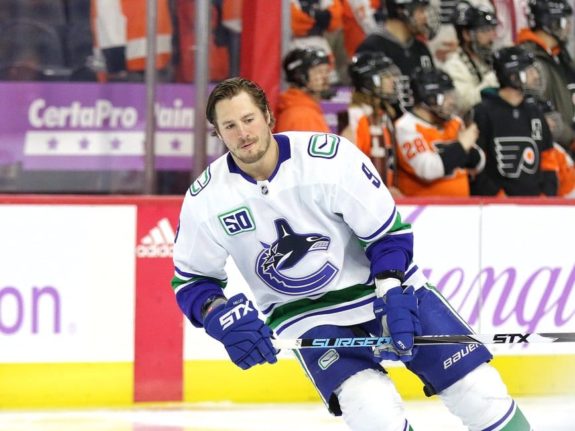
What could the Rangers desperately use to fortify their lineup for the stretch run? A top-six power forward who can score, play multiple spots and drive possession. You know, someone just like Miller, who’s working at a below-market cap hit of $5.25 million this season and next.
As for Hajek, the supposed centerpiece of the Blueshirts’ return? He’s struggled to find a place in the NHL since joining the Rangers, bouncing between the big club and the American Hockey League. The just-turned 24-year-old has been with the Rangers all season, but only because he requires waivers to be sent down to Hartford and the front office doesn’t want to lose him for nothing. Hajek has played in 14 games and recorded one assist and a minus-6 rating this season, and 11 points and a minus-7 mark in 91 career contests. It’s been unclear to this point what elite skills the former regime saw that compelled them to make Hajek the apple of their eye four years ago.
After Failing in New York, Howden Finding Footing in Vegas
While Miller’s ascendance represents an ongoing source of angst for the Rangers, Howden has recently decided to pile on. Most Blueshirts fans were left befuddled when former coach David Quinn committed a regular NHL role to the center, who was 20 when he played 66 games in 2018-19 before he got into 70 matches the following season. He appeared in 42 more in 2020-21. The results: 16 goals, 33 assists and an eye-popping minus-29 rating.
Howden’s three seasons with the Rangers seemed to stamp him as a bust, like Hajek a player who didn’t do anything well enough to deserve a consistent assignment in an NHL lineup. There was plenty of social media celebration when the Rangers moved him to the Vegas Golden Knights for defenseman Nick DeSimone and a fourth-round pick in July, with the common view among fans being that the deal was addition by merciful subtraction for the Blueshirts.
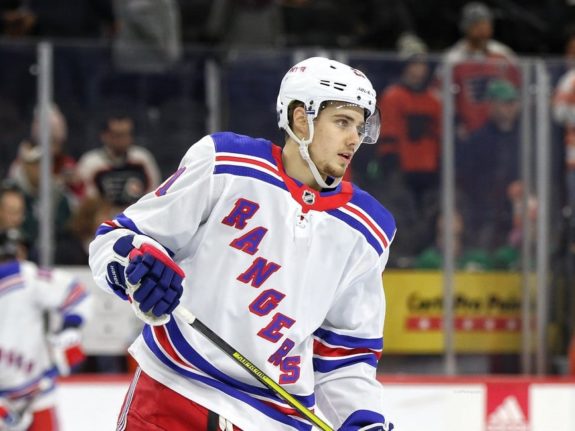
It took the better part of three months, but Howden has caused that online joviality to die down somewhat. Despite playing mostly on Vegas’ fourth line, he put up four goals, three assists and a plus-7 rating in a five-game point streak that was snapped in a 6-0 loss to the Calgary Flames on Feb. 9. The Casey Affleck lookalike has eight goals, nine assists and a plus-7 mark in 36 games this season.
Yes, it’s a small sample size. The Golden Knights, though, now have a 6-foot-3, 200-pound, 23-year-old center who, following a fresh start, might finally be beginning to flash the skills that caused the Lightning to make him the 27th overall pick in the 2016 draft.
Would Howden ever have exhibited that promise in New York? It’s of course impossible to say. What seems indisputable, however, is that he should have spent at least one season, and maybe more, in the AHL for developmental purposes, rather than being force-fed big NHL minutes from the get-go. Howden’s consistent presence in Quinn’s lineup never seemed to be justified by production, a clear sign that he was in over his head at the time.
Will Howden join Miller on the Rangers’ regret train? Time will tell – just as it definitively did with Miller.
Trading Lundkvist to Bring Back Miller Could be Rangers’ Latest Regret
So can a trade in which the Rangers have failed to receive a single lineup fixture despite giving away a top-six defenseman – who helped anchor two Stanley Cup runs in Tampa – and a high-scoring power forward really get worse? Why yes, it can.
That’s because the Rangers are now eyeing a re-acquisition of Miller as a potentially perfect solution to two problems – the aforementioned immediate need to fortify their forward depth for a playoff run this season, and as a possible replacement for pending unrestricted free agent center Ryan Strome in 2022-23. A reunion, though, will cost his original team plenty – and quite possibly, the one asset the Rangers received in the Lightning trade that has value.
If Drury wants to bring Miller back from British Columbia, the Canucks will probably demand right-side defense prospects, an area of their organization that lacks depth. The Rangers probably won’t trade rookie Braden Schneider, who has the look of a long-term fixture on the right on Broadway. Nils Lundkvist, on the other hand, could be in play.
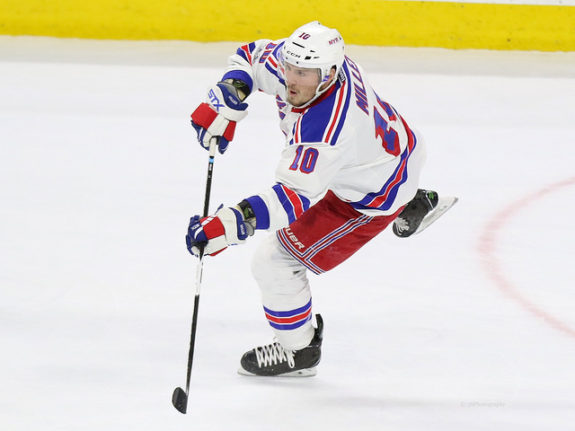
Lundkvist, of course, is the highly-regarded 21-year-old puck-moving defenseman, selected by the Rangers with that 28th overall pick in the 2018 draft, acquired from Tampa Bay in the trade.
Schneider’s ascension may have blocked Lundkvist’s path to the NHL in a Blueshirt, but the Canucks might have asked for him even if he had become a regular in the lineup rather than being sent to the AHL on Feb. 2 for more seasoning.
Related: Rangers’ Rookie Braden Schneider Has Arrived
So to review, the Rangers might need to trade the one promising player they received in the deal with the Lightning as part of another deal to re-acquire a player they never should have included in that swap, but who now looks like a necessity to fill present and future holes in their lineup.
The Rangers haven’t gotten much of a look at Lundkvist, who spent the past two seasons dominating the Swedish Hockey League before finally arriving in North America for this season. His skills didn’t pop the way Adam Fox’s did from the get-go on Broadway. Are the Rangers, though, prepared to move out Lundkvist after only 25 nondescript NHL games, ones in which he played on the third pair and was mostly benched late in games?
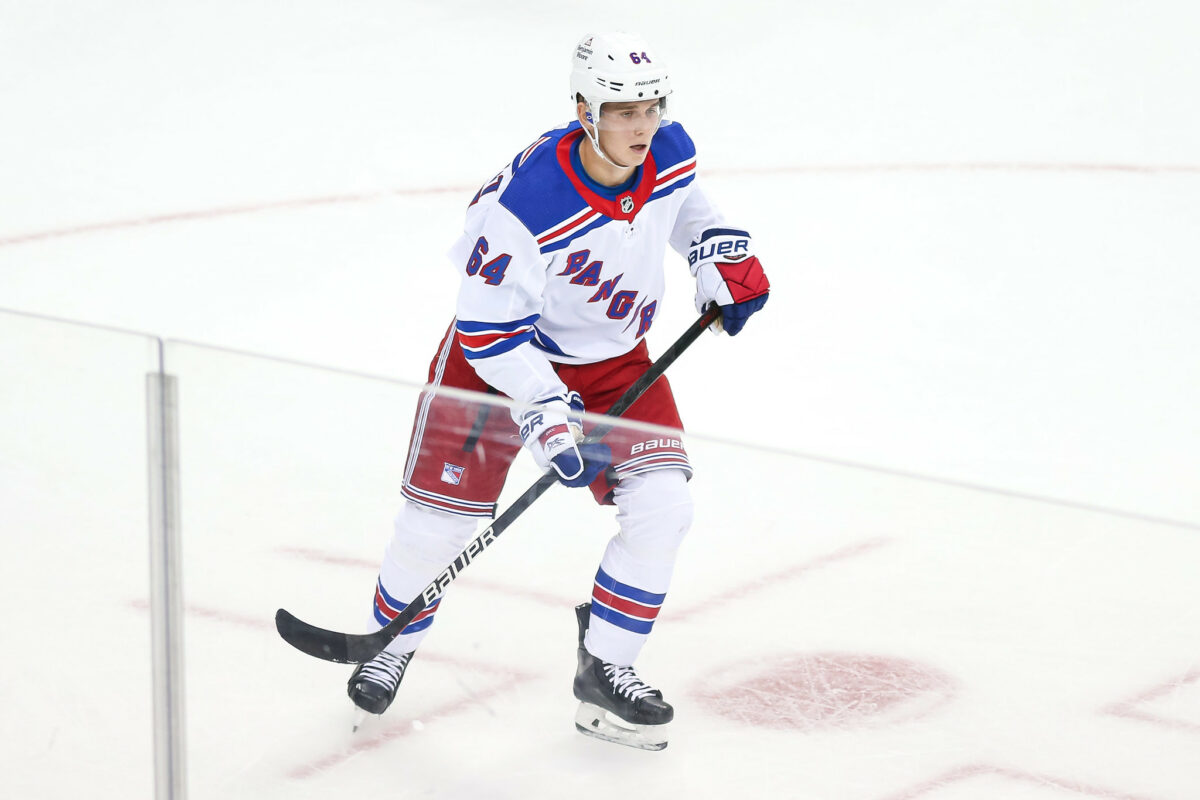
Miller has made the Rangers pay for giving up on him too soon (and might make them pay even more before the March 21 trade deadline). Howden could be on the way to doing the same. If Lundkvist emerges as a top offensive blueliner with another team a few years from now – especially if that team is the Canucks – the trade will have reached zombie proportions, with the Rangers being stuck in a seemingly endless cycle of reminders of just how badly constructed that early foray into rebuilding was.
Is Hajek Next Man up in Rangers’ Cycle of Lightning Trade Misery?
In that vein, there’s also Hajek, who seems destined to head elsewhere this offseason, and probably for a bargain price. The Rangers hardly seem wanting on the left side of their defense, with Ryan Lindgren and K’Andre Miller looking like part of the future core, and Zac Jones and maybe Matthew Robertson waiting in the wings.
Given the results of this trade so far, though, the Rangers should probably worry if and when they do send Hajek away. To them, Miller looked like a talented but obstinate player with maturity issues who wasn’t worth committing big money to; Howden appeared to be a misfire in the draft by the Lightning and another one by the Rangers for acquiring him. Will Hajek, with a similar reset, establish himself as a viable NHL player, as Tampa Bay thought he could when former general manager Steve Yzerman made him the 37th overall pick in the 2016 draft – 10 spots behind Howden?
Looking back, the Rangers can probably partially rationalize this failed trade as an anomaly, thanks to the ensuing four years of personnel moves that have them on the rise. After all, the day before the ill-fated swap, the Blueshirts engineered what has ended up yielding a lopsided return of their own, as they sent a fading Rick Nash to the Boston Bruins for a package that eventually yielded Lindgren, K’Andre Miller and Strome.
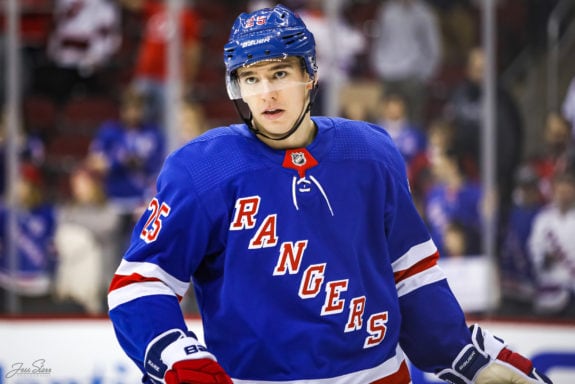
Generally, it’s the team that trades away futures for veterans that is left with seller’s remorse years later, when one or more of those young players or draft picks becomes a star for someone else. The Rangers, though, need to be careful that this deal doesn’t continue to deteriorate. Their rebuild has yielded an impressive young group that’s eyeing perennial playoff contention, but the karma surrounding this trade hasn’t favored them.
If Lundkvist or Hajek finds success elsewhere, the Blueshirts certainly won’t be able to claim they’re surprised – and Roy Hobbs’ revelation might become their own in regards to a transaction that will likely go down as one of the worst in recent franchise history.
